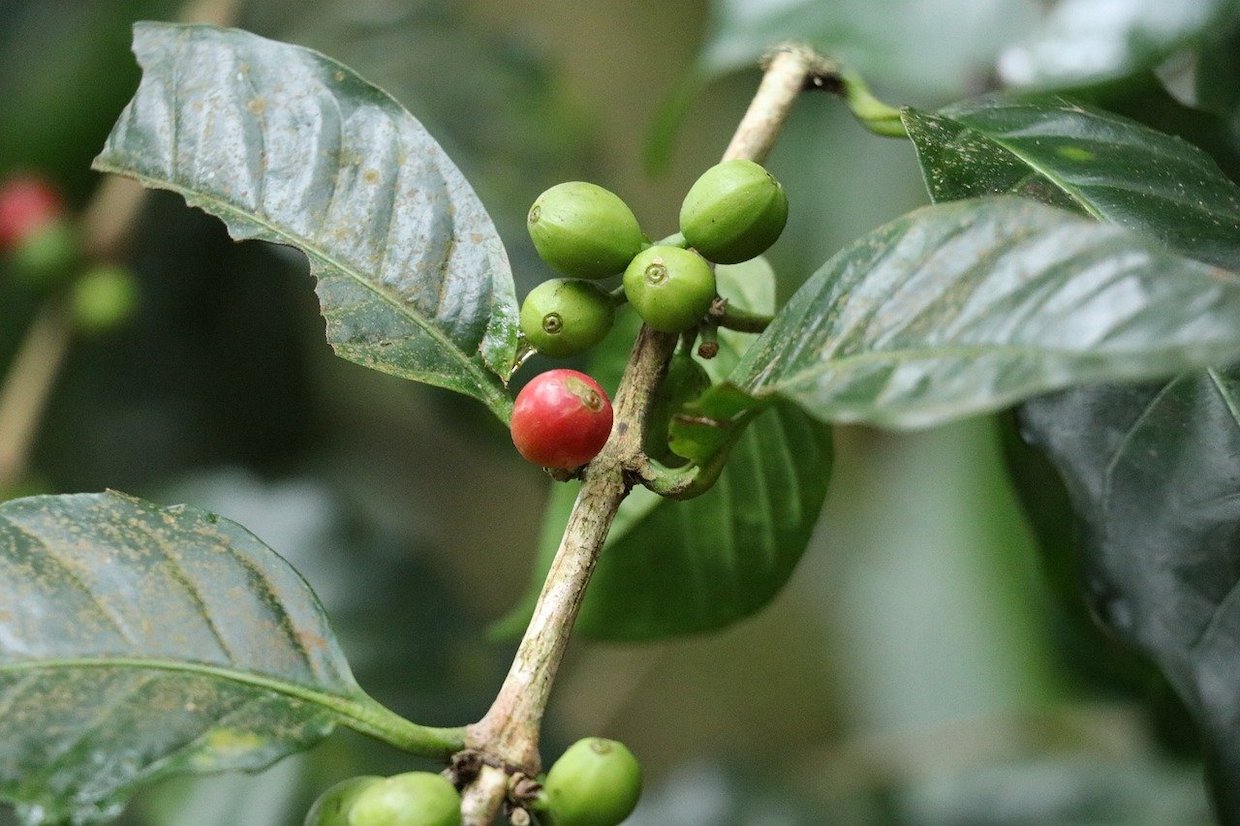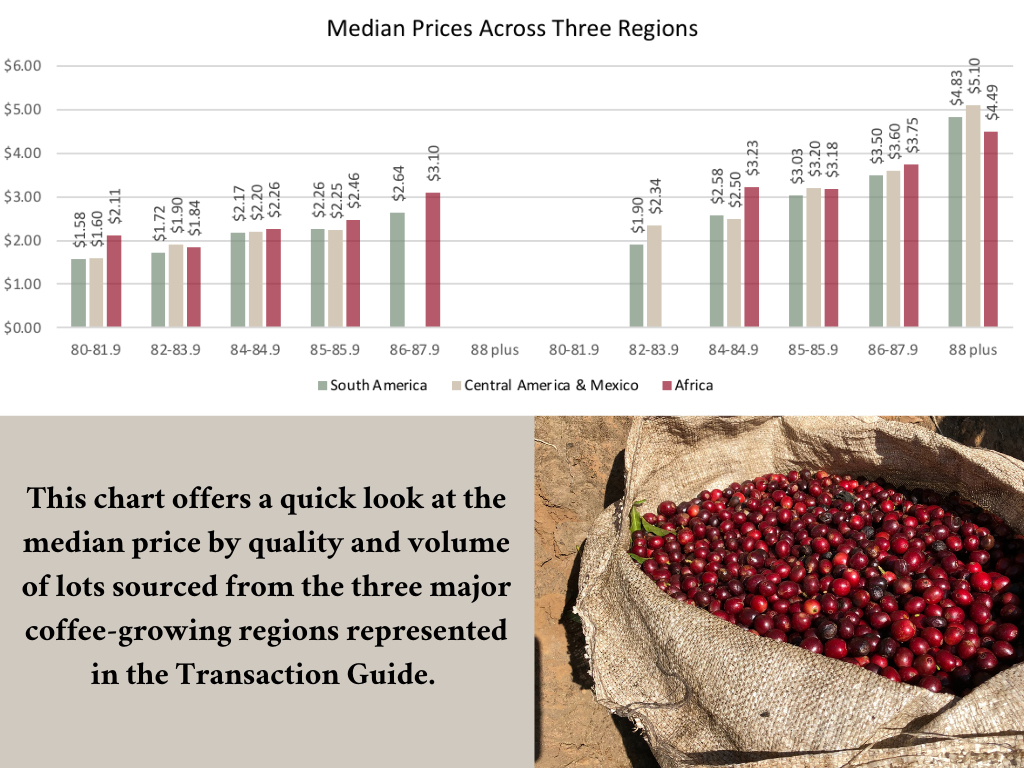Over the past four years, the commodity price for arabica coffee — a.k.a. the “C price” — can be characterized by extreme volatility. In 2018, the C price dipped below $1 USD per pound, and today it sits at approximately $2.29 per pound.
Such volatility stands in notable contrast to trend consistency found in the latest edition of the Specialty Coffee Transaction Guide, an annual publication involving anonymized contract data from more than 100 coffee roasters and traders from all over the world.
Maintained by a team at Emory University’s Business & Society Institute, the Specialty Coffee Transaction Guide’s latest edition for the year 2021 includes analysis of more than 58,000 green coffee contracts involving lots scoring 80 or above.
Showing price benchmarks based on factors such as country or world region of origin, purchase volume and quality score, the guide is designed to provide a more sensible point of reference for the specialty market than the volatile C price.
Beyond the numbers, the guide reflects underlying assumptions that coffee price volatility and woefully low C price references have historically contributed to widespread economic sustainability issues in the global coffee sector.
“It creates climate-change, political, and human rights issues, and contributes to the current migration crisis,” the Guide’s authors said of price volatility in an announcement of the 2021 release. “It is also a distraction within specialty coffee markets, where retail prices have been high and rising.”
Related Reading
- Coffee’s Price Collapse: How Did We Get Here and What Can We Do?
- Coffee Farmers Face Increasing Pressure To Migrate
- COVID-19 Curtailed High-End Green Coffee Purchasing, Analysis Shows
Since its release last month — with availability in English, Spanish and Portuguese — the Guide has been downloaded more than 780 times from people in 77 different countries, including 108 from coffee producers, 19 from producer cooperatives and 53 from farmer support organizations.
“With increased attention from buyers and sellers, we have a better chance of cultivating a more sensible pricing environment for green specialty coffees in the years ahead,” Emory University Professor and Specialty Coffee Transaction Guide Co-Author Peter Roberts told DCN last week.
This year, organizers are also supplying what they’re calling individualized “harvest reports” to data donors in the project, using the Guide to contextualize prices that donors paid in 2021. The reports reflect the Guide’s fundamental plea for data-driven reflection on purchasing decisions.
“I never imagined that, when we released the initial 2018 Transaction Guide, we would have 100-plus data donors from 23 different countries represented in the 2021 Transaction Guide,” Roberts told DCN, noting the Guide’s growth since its first edition. “This allows us to cover much more of the specialty coffee industry than we initially expected.”
The 2021 Specialty Coffee Transaction Guide is free to download upon registration.
Does your coffee business have news to share? Let DCN’s editors know here.
Nick Brown
Nick Brown is the editor of Daily Coffee News by Roast Magazine.








Comment